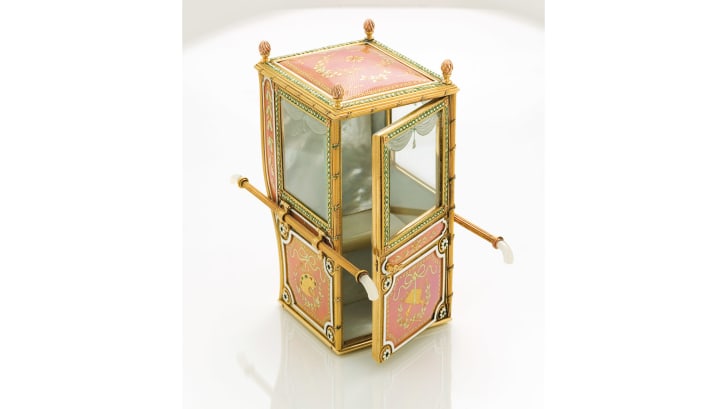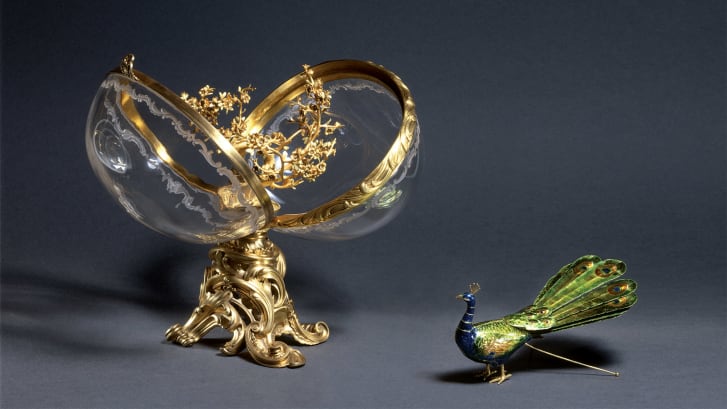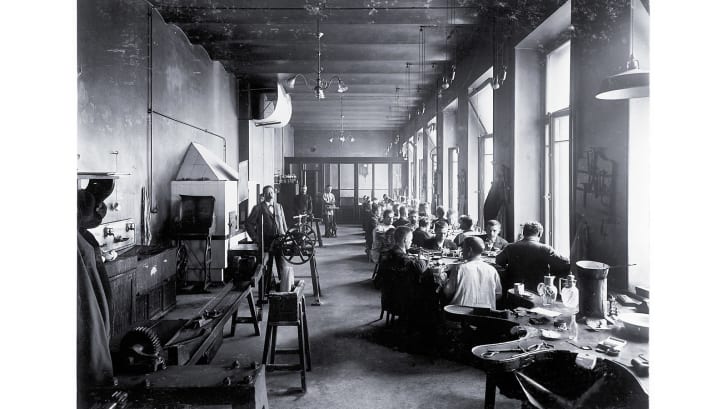
“They were magical objects, which explains why we’re still so enthralled with them now,” said British jewelry specialist, Geoffrey Munn, in a phone interview. “People have always had a thirst for beautifully made things, and the Faberge eggs quench that thirst perfectly. They are visually brilliant.”
But lasting fascination with the House of Faberge may also stem from the historical setting in which it operated. The business, which made its name and fortune as the official jewelry supplier to the Russian royal family and other European courts, was dissolved when the 1917 revolution put more than 300 years of Romanov rule to a violent end.

As the Tsar’s family fled St. Petersburg, the 50 Imperial eggs made by Faberge over the course of three decades were left behind. Some went missing — today, only 43 are believed to exist from the royal collection.
“Faberge’s story reads almost like a Hollywood movie,” Munn said. “You have a beautiful fallen dynasty, a lavish court life, a tumultuous downfall and these stunning, sentimental and very rare objects to witness it all. No other jeweler has been part of so much intrigue, mystery and sumptuousness.”

Objects from the House of Faberge fell out of fashion in the 1920s and 1930s, as more geometric and less ornate styles like Art Deco grew in popularity.
But the eggs — and Faberge’s other artistic creations — shot back into the consciousness of collectors and decorative art enthusiasts when, in 1949, British author Henry Bainbridge published the first monograph on the jeweler, Munn said.

Much has been written about Faberge since Bainbridge’s study. One of the latest books on the subject, “Faberge: His Masters and Artisans,” takes an unconventional approach to the jewelry house’s oeuvre by focusing on the collaborators that Faberge surrounded himself with, from designers to the master gold- and silversmiths who helped bring their visions to life.
“The House of Faberge ran an impressive operation,” said the book’s author and jewelry expert, Ulla Tillander-Godenheim, in a phone interview. “As many as 500 diverse craftsmen were employed by the jeweler in every aspect of the firm’s creations. The business occupied a five-story building in St. Petersburg, (with) four branches in Russia and one in London.

“The connections Faberge created with the craftsmen he worked with were pivotal to the success of the ‘brand.'”
The inspiration for the book, she said, came from her own past: Tillander-Godenhielm’s great-grandfather was a goldsmith to the Russian imperial court, and worked in the same period as Faberge. But the author also looked to her native Finland for material.
“A great (number) of craftsmen in pre-revolutionary Russia were Finnish-born,” she said. “After the revolution, they returned to their homeland. I went to personally find their families, and gathered their anecdotes and memories of the years that their late relatives spent working for Faberge.”
The result is a beautifully illustrated tome recounting the craftsmen’s stories through letters, photographs and images of the items they produced for the House of Faberge.
“Although it’s the eggs most people associate Faberge with, they only make half of the story,” Tillander-Godenhielm said. “The house’s head ‘workmasters’ created anything from cigarette cases to mantel clocks.”
Tillander-Godenhielm depicts Faberge as a businessman ahead of his time. To begin with, two of his chief designers were women — Alina Holmstrom and Alma Phil. His so-called “Faberge workmasters” were in charge of recruiting and personally training their own teams of artisans, and were allowed to set their own production schedules. Faberge also granted them the right to mark the wares with their own initials.
“Faberge ran his house on an early prototype of ‘industrial democracy,’ despite living under one of the world’s tightest autocracies,” the author said. “He was privy to Russia’s wealthiest circles, yet worked with mostly illiterate, humble people, often giving them free artistic rein. His objects are all the more remarkable because of that: They tell so many different stories (and) are a lesson in micro-history.”
Prices for Faberge eggs have risen through the decades, and now fetch huge sums at auction. In 2002, the “Winter Egg” sold to an an anonymous telephone bidder for $9.6 million at Christie’s in New York. Five years later, an enamel and gold egg with a diamond-studded cockerel went for a record £9 million (then worth $18.5 million) at the same auction house’s London location.
“The scarcity of the eggs has clearly driven their sales at auctions, as well as fuelled our interest through the decades,” Munn said.
Eggs rarely appear at auction, and today most of them can be found in museums and public institutions, from Moscow to Cleveland.
The largest collections are held by the Kremlin Armoury and the Faberge Museum in St. Petersburg, which house 10 each